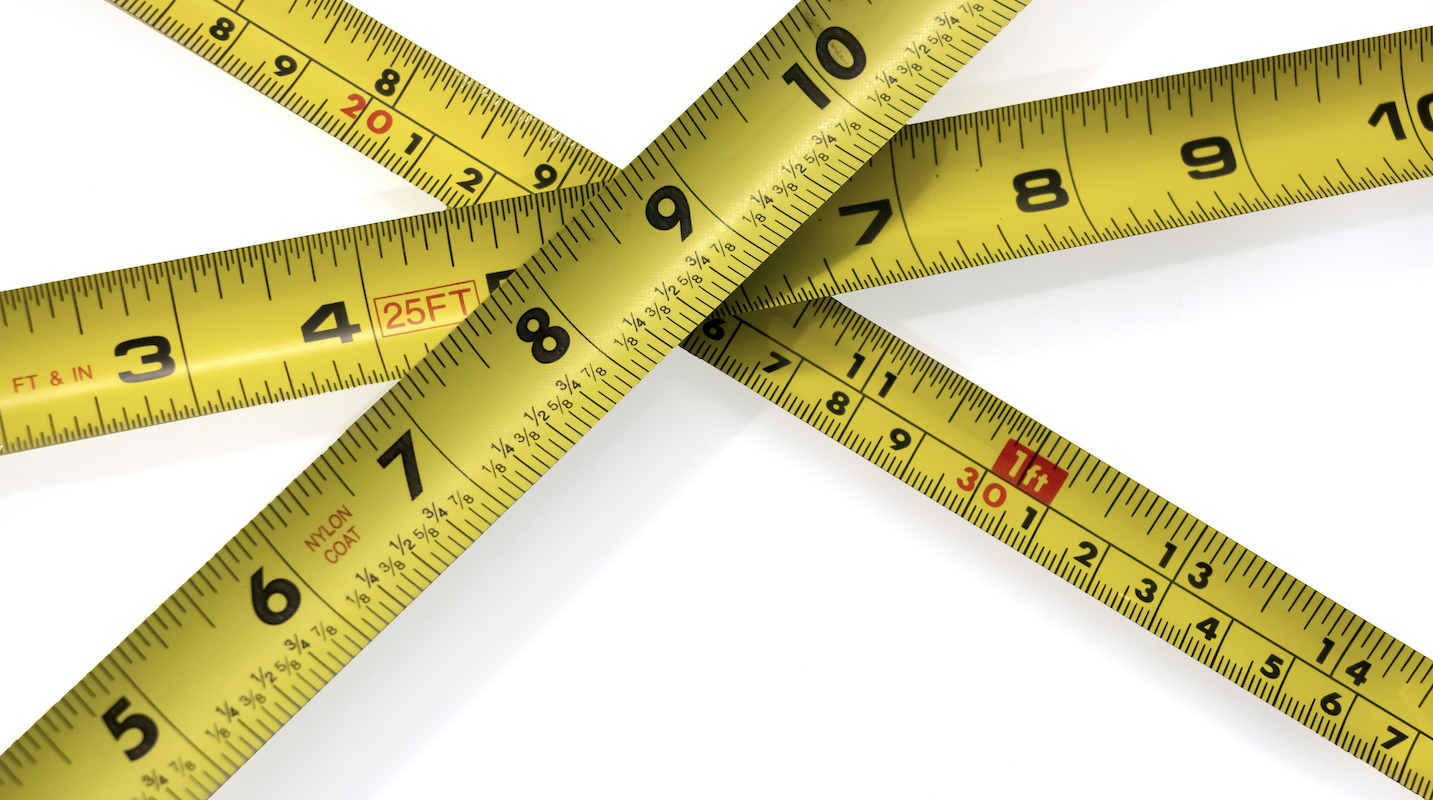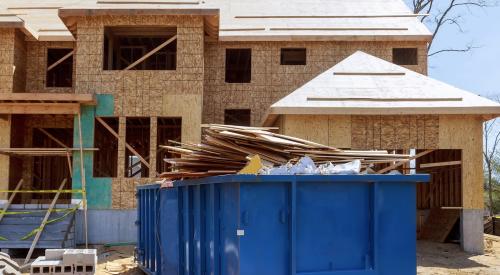The call from Jay Truman of Brookline Window & Door, in Cincinnati, came midafternoon on a hectic Thursday. (All names and locations have been changed, to spare the guilty.) He was prepping a presentation for Big River Homes, a first-rate builder well-established in the Ohio, Indiana, Kentucky tristate area.
I had visited Big River two weeks prior. We walked product and I ran the orientation for TrueNorth’s LeanBuilding Blitz, where 23 suppliers and trades (including Brookline) worked with a team of key builder staff to identify about 150 opportunities to eliminate product and process waste, turning up huge dollar savings.
On that busy Thursday, Jay had questions, and any notion of putting him off was quickly dispelled given that his slot with Big River was the next Monday afternoon. He was stuck and had less than two workdays left to make a case for how Brookline would help improve Big River’s process and eliminate waste, so now was the time.
I immediately liked Jay. He had 30 years of door and window experience with several suppliers and hundreds of builders. My quick take on him was: sincere, hardworking, salt-of-the-earth, walks the talk, very knowledgeable. We meet a bunch of folks like Jay in each Lean workshop. With more than 200 implementations under our belts involving 23 suppliers and trades in each, a sample size of around 4,500 builds some strong impressions. Jay fit the mold.
After trading some stories about the Cincinnati Reds’ glory years in the ’70s and now-defunct breweries in Cincinnati, Jay’s first question was, “OK, I listened to you and Big River’s president at the orientation. I have some good ideas, but just how honest can I really be?” I replied that the process doesn’t work unless you are candid and forthright, so I had to ask, “What’s behind your concern?”
Jay was silent for a minute. As he hesitated, I wondered about the builder. Big River had a solid team; I was impressed with their people. They said the right things and their product was strong. We’ve worked with more than 200 builders and I’d place these folks in the top 25% of a pretty select group. I didn’t pick up on anything that smacked of abusive tactics, unfair treatment, or game-playing. Jobsites looked good and were well-organized and cleaner than most. Had I missed something?
Jay finally said, “Look, I like these guys. In fact, they’re one of my favorite builders. It’s just ... I’ve been through a lot over the years, and I don’t want to ‘step in it.’ If I get down to brass tacks, it will ruffle some feathers. I cope with whatever comes my way, don’t complain, make a good income, and take care of my family. That’s what I do.”
I explained that we are professional “feather-rufflers,” and in Lean implementation, it’s inevitable. In fact, if some feathers don’t get ruffled, we probably aren’t pushing hard enough. This is what the client pays us for, to help them get the best, most honest, and helpful feedback from their suppliers and trades in a safe environment to drive real product and process improvement. Everything depends on the suppliers and trades. With that, Jay took a breath and launched into a long discourse on his life as a door and window man.
The Life of a Door and Window Man
Jay arrives at his office by 4 a.m. each day, with rare exceptions. “FOUR A.M.? Every day?” I asked in disbelief. “Yeah, unless I’m heading to Dayton, Lexington, or Louisville to measure houses that day,” Jay said. “All part of my territory. Then I leave the house by 3:45.”
“But Jay,” I protested, “I know the territory. That puts you in Dayton by 5 a.m. You walk houses in the dark?” Jay laughed and told me, “Well, it’s been done. I keep two LED headlamps in the truck. Usually though, if it’s still dark, I get breakfast and do paperwork until first light, then start measuring. In the summer, when it’s light by 5, I might measure first, then get breakfast with one of the builder’s guys at about 6:30 or 7. Those relationships are important.”
I was half impressed and half appalled. Jay’s dedication was remarkable. He explained he left his office by 4:30 in the afternoon and arrived home by 5 p.m.—better than most of his friends. The proverbial 4 a.m. to 4:30 p.m. shift! Jay then added that he usually works one or two Saturday mornings a month due to builder schedules and last-minute requests. “Hey, I’m on commission,” he said. “I’ll make 500 bucks while my competition plays golf or sleeps in.”
Next, I asked if he measured every door and window opening in every house. “Damn right!” Jay came back quickly. It took a lot of self-control for me not to launch into a rant, but I held back and calmly said: “So Jay, tell me why you have to measure every house.”

The Usual Suspects for Inefficiency
Let’s stop here and ponder the situation. You all know Jay. In fact, you know a lot of Jays. Perhaps you are Jay. What do you think Jay told me? For most builders, their suppliers and trades make multiple trips to see if things are truly ready for a labor crew or material delivery. But trips to measure? Aren’t the openings clearly indicated on the plans with precise measurements? Don’t the framers build exactly to those specifications? Don’t your field managers check these measurements? Well, no ... and certainly not 100% of the time.
The knee-jerk response to that from builders is usually, “Those damn framers!” and it sometimes is their fault. But step back a bit ... Where else might the fault lie? The usual suspects include architects who draw the windows but may not provide the correct dimensions. Then the drafting team creates the working drawings (assuming you do those at all). And, if you offer window options (that’s a debate for another column), Sales and/or the design center must translate the choices correctly to Purchasing. That’s a lot of middlemen to potentially mess up the measurements.
Purchasing has multiple jobs to get right: check with Design and Construction to ensure the window schedule is correct and any changes work within the chosen elevation; check that the windows don’t need different headers, supports, lintels, or throw off other aspects of getting the house built; get the window specs to Drafting so they can make any changes on the plans; and send the correct plans and specs to the supplier, trade, and field manager. If all that goes right, you have a decent chance the built openings will be correct.
Given the multiple opportunities to not get it right in the field, is it any surprise Jay runs out to measure every opening in every house? He described finding one or two misframed openings in nearly every home; three, four, or five are not unusual, and 10 or 12 happen with surprising frequency. He described houses where every single opening was off and had to be reworked by the framers.
Let’s pause one more time to consider the consequences and costs, the impact on the schedule, and the impact on Jay, the most obvious being on his time. He reported a best-case scenario of 1 hour for a measurement trip: 20 minutes to the site, 20 minutes to measure, 20 minutes back. I asked how often this best-case scenario happens and Jay said, “Now and then.” But going to Lexington or Louisville from his office on Cincinnati’s north side means at least 90 minutes each way, often more. Jay tries to measure more than one house, but those trips burn up half a day, at minimum.
I challenge you to sit down with each supplier and trade and ask: “How can we, the builder, help you be more profitable?”
Jay measures 250 houses a year for Big River Homes. Very conservatively, he averages 2 hours per house over the course of a year. That’s 500 hours per year and, given Jay’s 60-hour workweek, more than eight weeks a year! Take out holidays and some vacation time and Jay spends a minimum of two months a year on measuring trips for just one builder. Let’s peg Jay’s salary, commission, and benefits at something north of $100K (again, probably conservative). That’s $80 per house, on average, across 250 units for Big River. With transportation, admin, and overhead, you’re looking nearer to $200 per unit. Between doors, windows, flooring, cabinets, countertops, and a smattering of others, such as insulation, drywall, HVAC, and foundation, where more precise measurement may be required, we are seeing at least five trips per house. Adding in time, transportation, admin, and overhead, we’ll call that a very conservative $100 per unit, or a $500 bill.
So you build 200 homes a year. That’s a $100K burden your suppliers are shouldering because your team can’t ensure critical measurements are correct; all for work that should be unnecessary, not just for simple entry-level homes but for every home. How can I say that? Because we’ve worked with exceptional builders that have made Jay’s field measurements unnecessary. The only exception is often high-end countertops, which are so expensive and unforgiving that suppliers virtually always come measure, no matter how perfect the build.
If everyone does their job throughout the entire process, measurement trips for doors, windows, and most other materials are a waste of time and money. That’s a big if. But most suppliers can easily recall a builder for whom they don’t have to measure. And guess which builder is their builder of choice ... gets the best service and delivery ... and sees their best pricing?
Make Time to Meet With Suppliers and Trades
One more pause is in order. How many of you have ever leaned on your door and window supplier for a price reduction, or at least a hold on a price increase? I’d venture 99%.
Now, how many of you have ever sat down with that supplier and asked, “What, specifically, can we do to eliminate measurement trips or any other extra visits to our jobsites?” and then developed a plan together, monitored it, made the adjustments, and locked it in? Obviously, similar situations occur with all suppliers and trades, and the same question applies.
Most suppliers can easily recall a builder for whom they don’t have to measure. And guess which builder is their builder of choice ... gets the best service and delivery ... and sees their best pricing?
I challenge you in 2020 (and annually) to meet with each supplier and trade and focus on just one subject: “How can we, the builder, help you be more profitable?” Then listen to them … and respond. Many call that radical, impractical, a nice-sounding idea you just don’t have time for. Yet you make far more time and pay a higher price for all of the consequences of not doing it.
Consider the total cost to get a framer back to the site to fix the openings. OK, so he doesn’t charge you, but he’s doing rework instead of framing additional new homes. Now play out a similar scenario across your 30 to 40 suppliers and trades. What’s the impact on your schedule? How do you cost the additional load on those—field and office—who get involved? Not a simple measurement but, suffice it to say, the costs are huge, both financially and psychically.

Builder Process Flaws—Same as Ever
So Jay keeps fighting the good fight, getting the job done. Never complains. You and all of the other builders think everything’s fine. Yet our conversation revealed that each year Jay spends more than half of his time measuring. That’s waste. Yes, Jay once served a good-size builder that required no measurement trips, but Brookline Window & Door was underbid and lost that account to another supplier. That supplier realized it was much more profitable to work for a builder that ensures framed openings are right first time, every time.
Let me emphasize: Big River Homes is, in so many ways, a very good builder. After the shock of the combined feedback from its suppliers and trades and, understanding the waste and the opportunities, Big River got to work, following up on my challenge question with every vendor. Today, I’d put them in the top 10% of builders we’ve worked with over 23 years—quite an improvement.
The late columnist Erma Bombeck wrote, “It seemed rather incongruous that in a society of super sophisticated communication, we often suffer from a shortage of listeners.” I couldn’t find the year she wrote this, but it was prior to the internet and well before Facebook was a twinkle in Mark Zuckerberg’s eye. What would Bombeck say today? Our sophistication in communication has increased by an order of magnitude. But how about listening? Has our sophistication made that better or worse? One good thing, I guess—as long as these process and product issues continue and builders fail to fix them—is that Jay has genuine job security. His measurement work is badly needed, costly as it is.
Access a PDF of this article in Pro Builder's March 2020 digital edition













